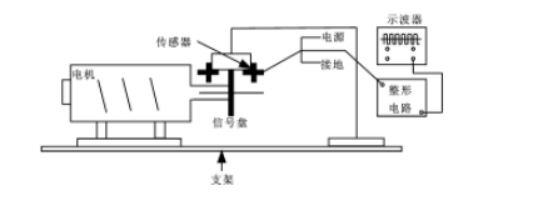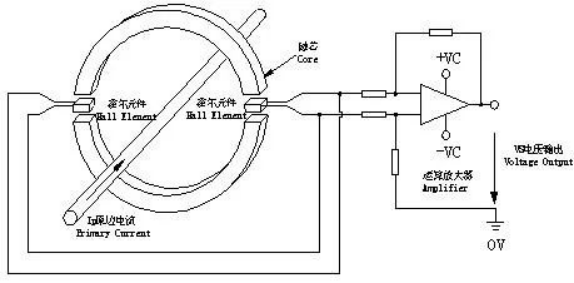Based on the Hall principle, we generally recommend closed circuit current sensors for true effective value current sensors.
1、 Performance differences
Compared to open-ended current sensors, open-ended sensors are only convenient for installation, but their performance will be greatly reduced. Unless the current is greater than 300A and the accuracy requirements are not high, open-ended true effective value current transmitters can be considered.
The basic principle is that the Hall sensor for rails below 50A generally has the best accuracy, because the front-end acquisition inside is a closed-loop Hall current sensor, and there is a coil present where a current passes through (which is required by the working principle of the principle and also plays a role in shielding interference).
The advantage of doing so is that it can distinguish small changes in current and improve the accuracy of the transmitter. For example, an 8mm aperture rail mounted current transmitter.

Hall Effect Principle Diagram
If replaced with open-loop or open type, the accuracy will be very poor, especially when the rated current is less than 50A and the minimum measurement current is between 1A and 5A. The error will be amplified, which is called the coercive force of the magnetic core in the industry. In fact, the error is caused by the residual magnetism and geomagnetic field of the silicon steel magnetic core in the open-loop principle. Unless there are special circumstances, do not consider this solution;
2、 Advantages and disadvantages
When the current is greater than 50A, the internal primary acquisition is actually an open-loop Hall current sensor. For open-loop current sensors, the biggest challenge is to overcome leakage and anti-interference at low currents.
For example, a 100A current sensor typically has an open zero point of around 0.1MA and a closed zero point of approximately 80-120uA.
There are two notches on the magnetic core of an open type current transmitter. Increasing the notch will increase the leakage magnetic flux, reduce the magnetic gathering ability inside the magnetic ring, and double the measurement accuracy. Generally, for open type and imported transmitters, the labeling accuracy is 2%, but in reality, it can be between 2% and 5% at low currents, resulting in relatively large errors.
Another challenge is the repeatability of the opening area, where errors are mostly caused. When we perform factory calibration, it is in the closed state. When the client is installed, opening and closing it will result in errors. If the subsequent MCU does not have zero point calibration, the accuracy will be amplified.

Schematic diagram of open type Hall sensor
Open type transmitters have high requirements for external electromagnetic environments because they contain gallium arsenide Hall chips, which have high sensitivity and are easily affected by external interference. Therefore, when it is impossible to determine whether there are mechanical relays, contactors, high-frequency power supplies, etc. on site, it is advisable not to choose an open type Hall current transmitter.
Current transmitters are generally installed in cabinet equipment or used during on-site construction. If the interference strength cannot be determined on site, please try not to consider open type. Equipment debugging may be better, but in actual on-site work, interference may affect the judgment error of subsequent operating components.
If it is necessary to use an open type Hall current transmitter, please add cold-rolled steel or silicon steel, copper foil shielding boxes at each interval to ensure the service life and safety of on-site use.
The difficulty of installation is simply that the wiring harness head has been processed and is difficult to thread. Please adjust the on-site work sequence and use a closed type Hall current transmitter.
Source: Sensor Expert Network. If there is any infringement, please contact us for deletion



